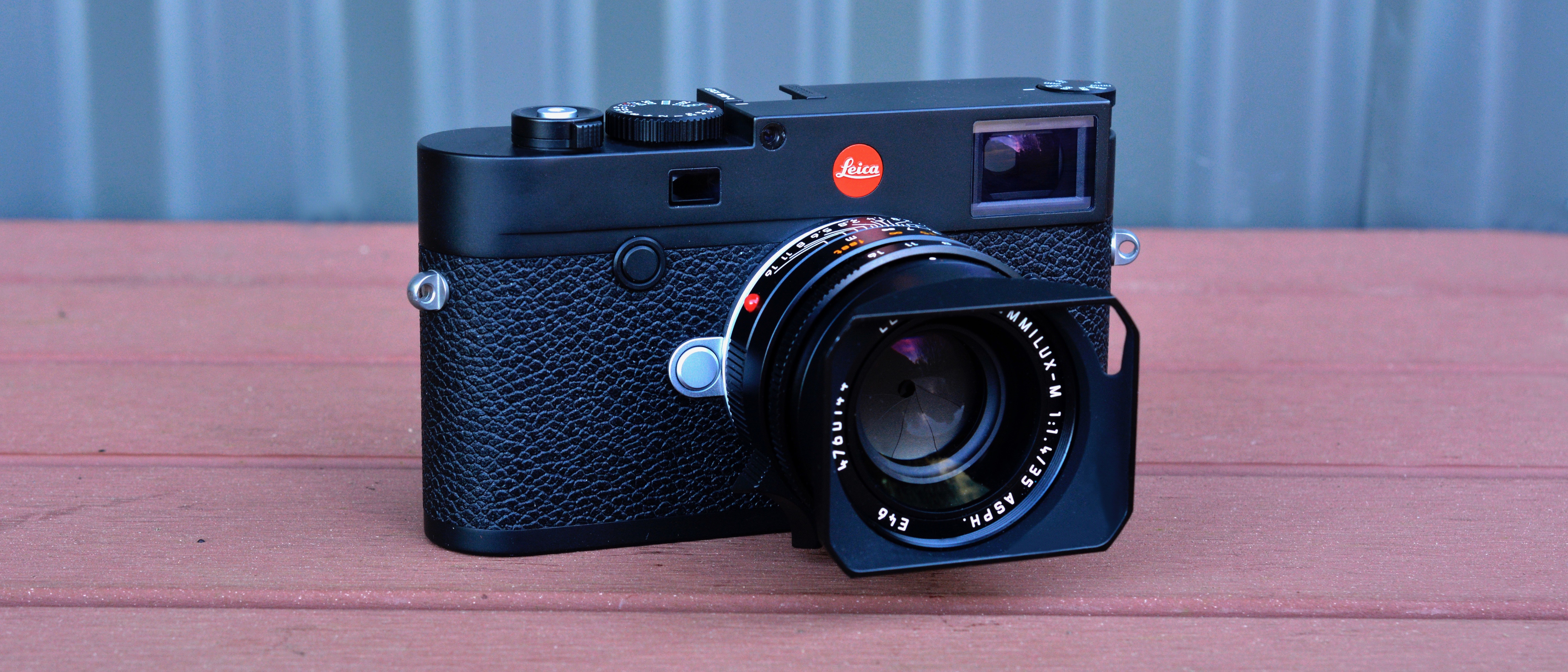TechRadar Verdict
The M10-R is still essentially a prestige camera for the purists or somebody who simply likes to do things differently, but it is also now right in the mix in terms of the image quality standards being set by the leaders in mirrorless cameras. The price tag is always going to be an issue, but anybody who can afford it is also buying into the Leica heritage and a very distinguished history.
Pros
- +
40MP resolution delivers a competitive image quality
- +
Classic styling and handling has enduring appeal
- +
High resale values will help offset purchase price
Cons
- -
No video and limited digital functionality
- -
Rangefinder focusing won’t be to everybody’s taste
- -
Can only use with prime lenses
Why you can trust TechRadar
Two-minute review
The idea of a digital version of Leica’s M rangefinder camera got off to a shaky start in 2006 with the M8, but the concept has been evolving ever since and the M10-R is arguably the best execution yet. The challenge for Leica has been to balance the key traditional elements of its legendary 35mm RF cameras with the consumer expectations of a contemporary digital camera… which is hard to do without compromising something somewhere. Consequently, these will never be mainstream cameras – and, in fact, Leica sees the exclusivity as being desirable – but M10-R owners can expect competitive imaging performance… just in a very different package to a DSLR or a mirrorless camera.
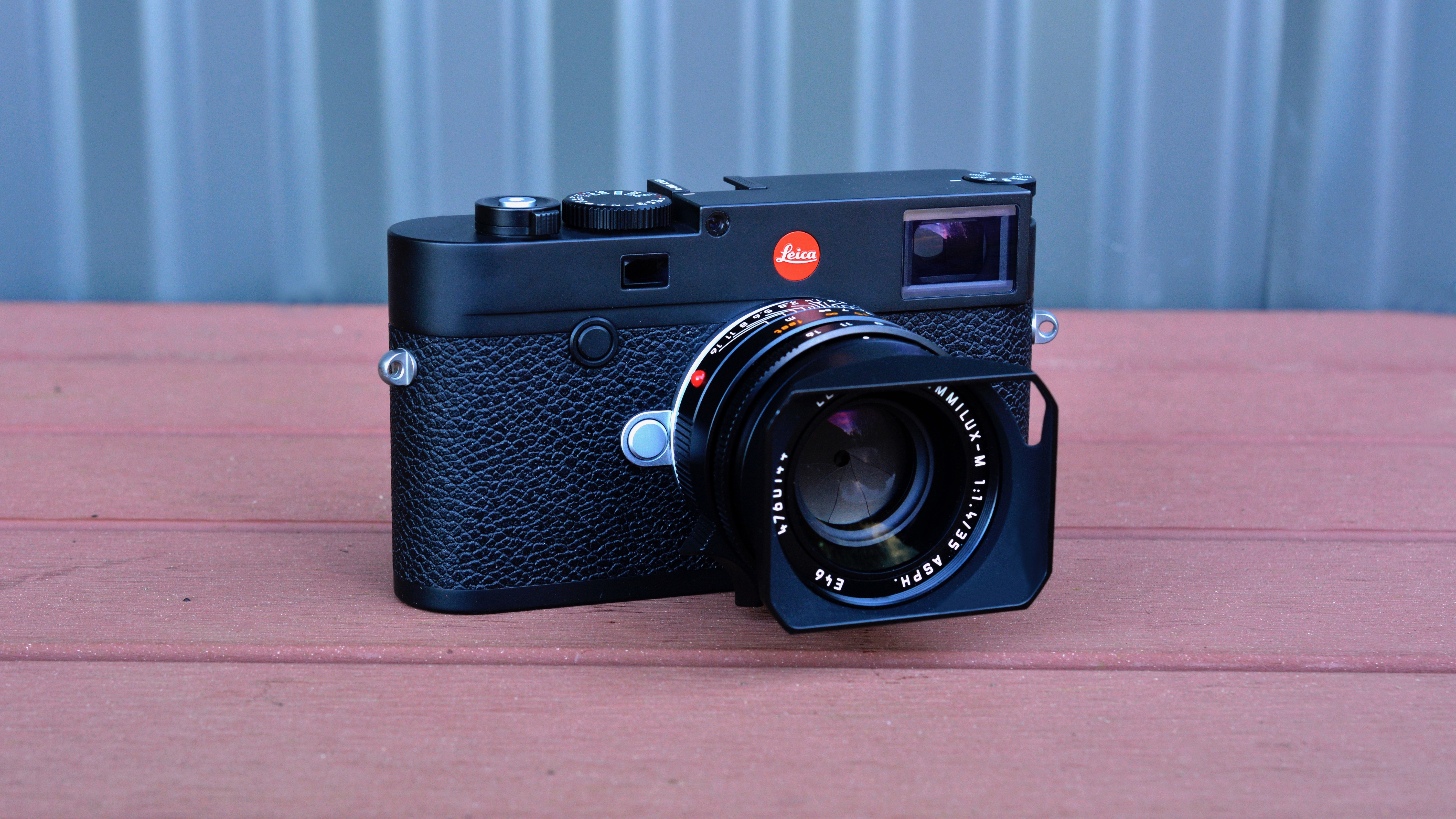
Price and availability
Key features
Design and handling
Performance
Image quality
Should I buy it?
At the heart of this is the M10-R’s 40.8 megapixels full-frame sensor, which is essentially the color version of the current M10 Monochrom’s B&W-only CMOS imager.
To extract even more performance, the sensor doesn’t have an optical low-pass filter. The native sensitivity range is equivalent to ISO 100 to 50,000, and JPEGs can be captured in one of three image sizes, while RAW files are recorded in the Adobe DNG format with 14-bit color at 7864x5200 pixels.
As with the other M10 series models, there’s no provision for recording video so there are neither HDMI or USB connections. The single memory card slot is for UHS-I speed SD devices. The sensor is matched to Leica’s current-generation Maestro II processor, enabling continuous shooting at up to 4.5fps with a 2GB buffer memory for bursts of up to 40 frames.
The classic Leica combined viewfinder/rangefinder – which was a revolution when introduced on the M3 in 1954 – is supplemented by a fixed 3-inch LCD monitor with a resolution of 1.037 million dots and touchscreen controls. The optical viewfinder (OVF) is the same as the standard 24MP M10’s, with 0.73x magnification, automatic parallax correction and auto-activated brightline framing pairs for the 35mm/135mm, 28mm/90mm and 50mm/75mm focal lengths.
The body is magnesium alloy with brass top and bottom plates, and sealing against dust or moisture. The mechanical shutter is the same quieter system that was introduced the M10-P and has a speed range of 125-1/4000 second with flash sync up to 1/180 second. As always with a digital M, exposure control is via either aperture-priority auto or manual modes, but the longest timed exposure is now up to 16 minutes (versus four minutes on the other M10 models). In-camera adjustments for JPEGs are limited to color saturation, sharpness and contrast, but the M10-R does still have a few frills – namely an intervalometer, auto exposure bracketing and a dual-delay self-timer.
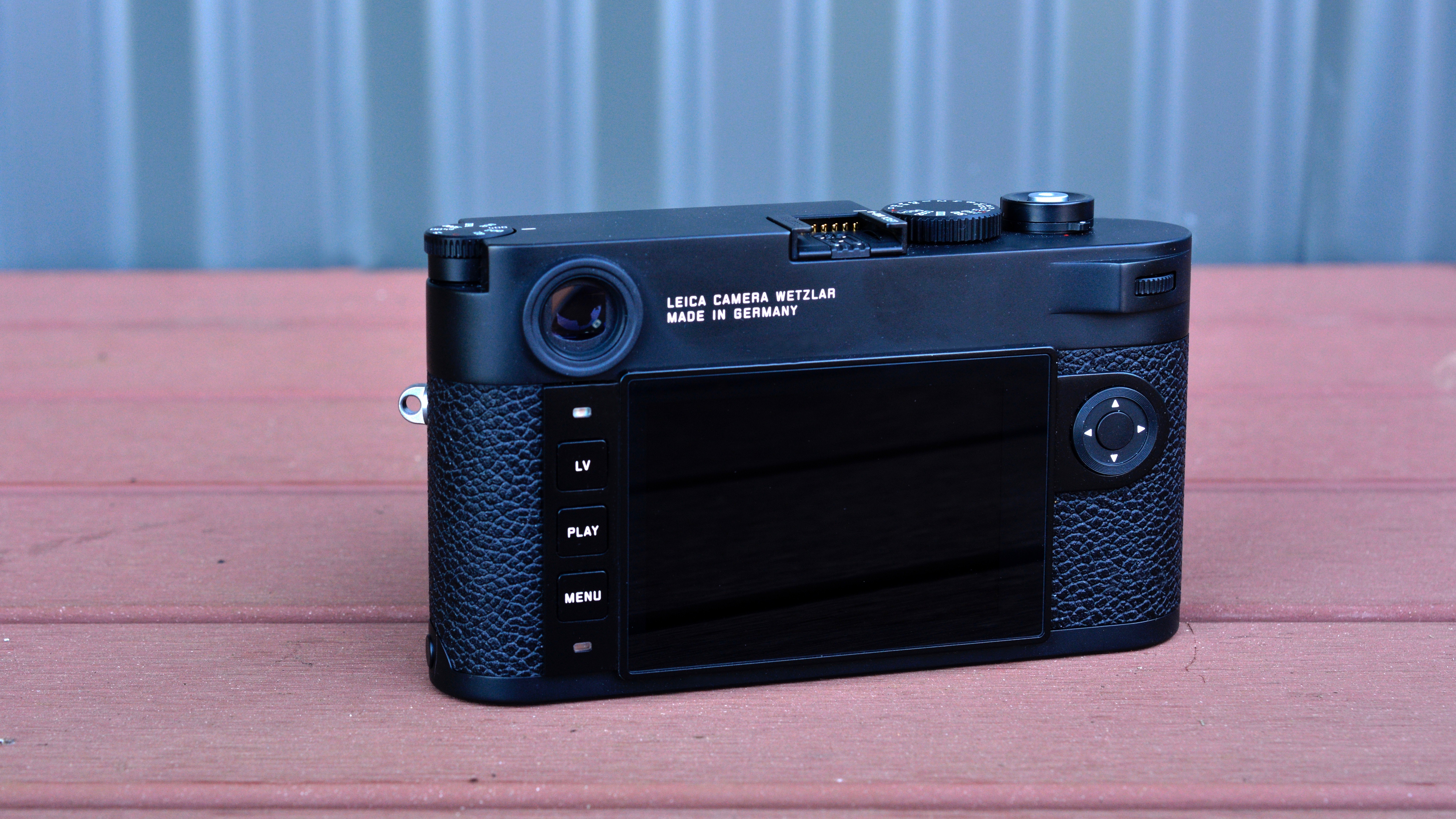
However, the M10-R does have a bit of a digital alter-ego, accessed by switching to live view operation. Obviously, the monitor screen becomes the viewfinder, but there are also some extra capabilities, most notably a choice of exposure metering patterns – multi-zone, centre-weighted average and spot – as measurement is now via the imaging sensor. The live view display also provides a dual-axis level indicator. There’s also a real-time histogram, both highlight and shadow warnings (each adjustable for the lower and upper thresholds), a grid guide (either 3x3 or 6x4) and manual focusing aids, namely a magnified view based on a moveable target and a focus peaking display.
In terms of performance, some of it is entirely in your hands as the focusing is manual and the exposure control is based on centre-weighted average metering, which can be tricky in contrasty lighting situations. The double-image rangefinder focusing is easy to use and very precise too, but it’ll be a culture shock for anybody who has only ever relied on autofocusing before. As expected with 40MP resolution on tap, images have plenty of detailing and definition along with smooth tonal gradations. The color reproduction balances accuracy and saturation very well, and the sensor’s wide dynamic range means plenty of exposure latitude when shooting in RAW so, if the centre-weighted metering does underexpose, it’s easily corrected post-camera.
It’s become a common practice among reviewers to compare cameras with similar sensor specifications in order to establish where they sit in the scheme of things. This is harder to do with the Leica’s digital M models because there simply isn’t anything else like them on the market – Fujifilm’s X-Pro3 is arguably the closest, but still miles away in conception and execution.
In essence, you won’t be buying the M10-R simply because it has a 40 MP sensor – appealing though that certainly is. When you buy an M camera, you’re essentially buying into the history, the heritage, the mystique, the individuality and, yes, the prestige… put simply, you want a Leica and you’re prepared to pay for it. Nothing else will do and, to some extent, the specifications are secondary. However, the M10-R does deliver something more because, beyond the all the classic rangefinder camera stuff. It’s a competitive performer in terms of image quality, ably assisted by the supreme quality of the Leica M prime lenses.
Leica M10-R price and release date
Leica's latest rangefinder was announced on July 16, 2020 and began shipping worldwide a few days later on July 20.
It is available now directly from Leica stores and from major retailers for the rather large sum of $8,295 / £7,100 / AU$13,500. For a Leica camera, though, that's the kind of price you'd expect to pay.
Those numbers are for the body alone, which is available in a choice of black or chrome finishes.
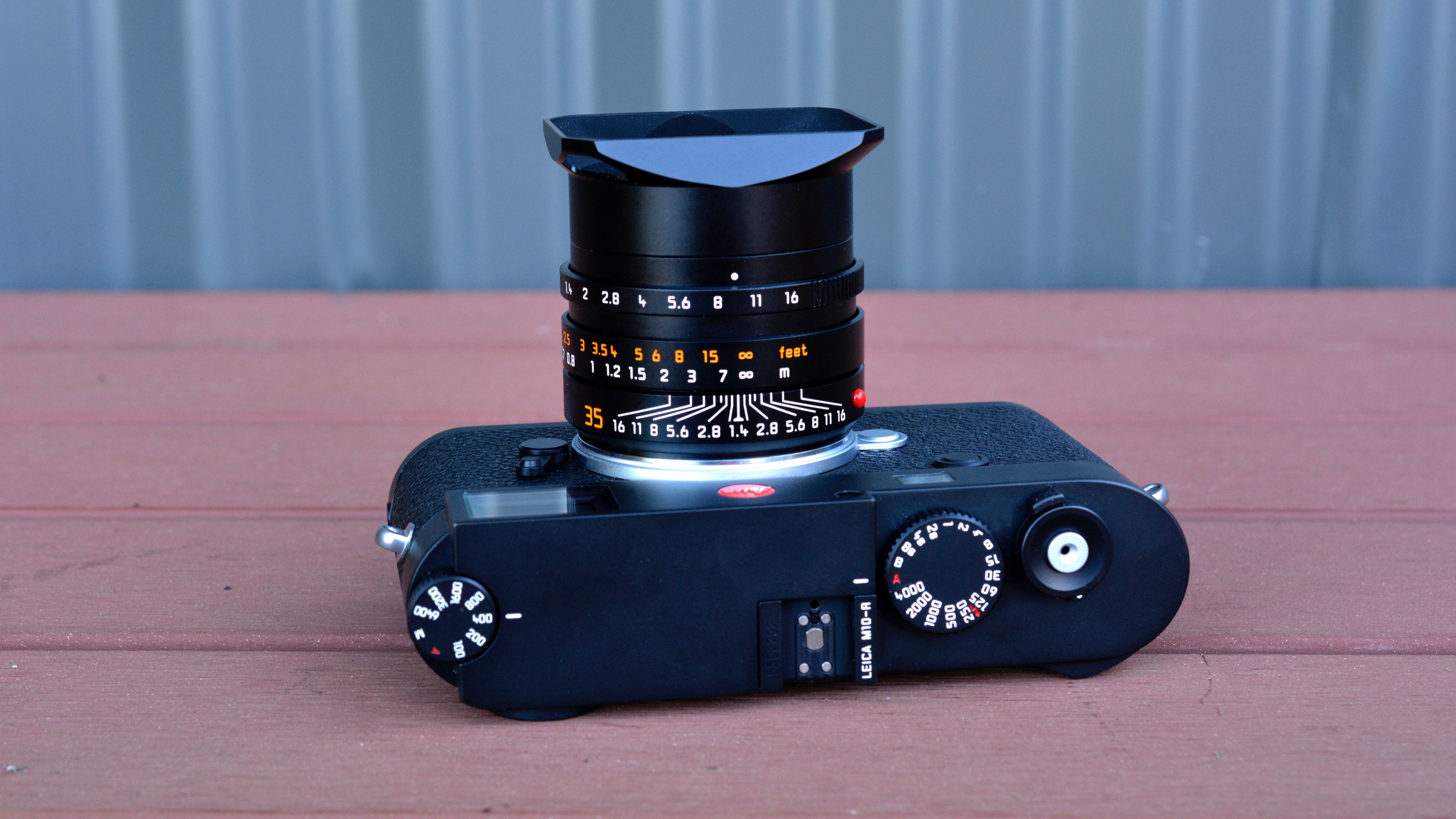
Key features
- Color version of the M10 Monochrom’s 40.9MP sensor
- Quieter mechanical shutter assembly from the M10-P
- Optical viewfinder with rangefinder focusing
The M10-R is the fifth member of the Leica’s M10 line-up, joining the original model, the stealthy M10-P, the purist M10-D (which goes without a monitor screen) and the B&W-only M10 Monochrom.
In terms of its particular party tricks, the M10-R has what’s essentially the RGGB-filtered version of Monochrom’s 40.89 megapixels full-35mm CMOS sensor, plus it inherits all the refinements introduced with the M10-P, including the quieter mechanical shutter assembly and the touchscreen controls.
In keeping with the Leica philosophy of Das Wesentliche – which translates as ‘The Essential’ – the in-camera processing for JPEGs really is just the bare essentials… contrast, sharpness and color saturation or, alternatively, monochrome capture. There are a couple of frills – an intervalometer, auto exposure bracketing and a dual-delay self-timer – but that’s your lot and everything else is about direct camera control.
This starts with the optical viewfinder, which has been at the heart of every M camera from 1954 and the original M3 to today. The ‘M’ stands for messsucher – yes, there are three esses – the German word for a combined viewfinder and rangefinder, which was the genius of the M3 at the time. Of course, it’s been steadily refined over the decades with the original M10 introducing the current round of improvements, including a wider field-of-view and an increased magnification of 0.73x.
It has automatic parallax correction and three sets of LED brightline frame pairs which automatically activate when a lens is fitted. A lever on the front allows for the brightline pairs to be previewed for determining framing. The big deal with a rangefinder camera’s optical viewfinder is that it also shows you what’s happening outside the image frame, providing an element of anticipation… which has always been a key aspect of street photography, for example. There’s over 100 parts in the M10-R’s viewfinder and Leica takes the optical performance here as seriously as it does with its M mount lenses.
Focusing is achieved via a double-image rangefinder which has an effective base length of 50.6mm. In RF camera terms, the longer the base length, the easier it is to focus precisely… and 50.6mm is comparatively long, allowing for greater accuracy. Of course, it helps that the M lenses also have the mechanical precision that allows for very fine control – something that will certainly surprise you, if you’ve only ever relied on autofocusing.
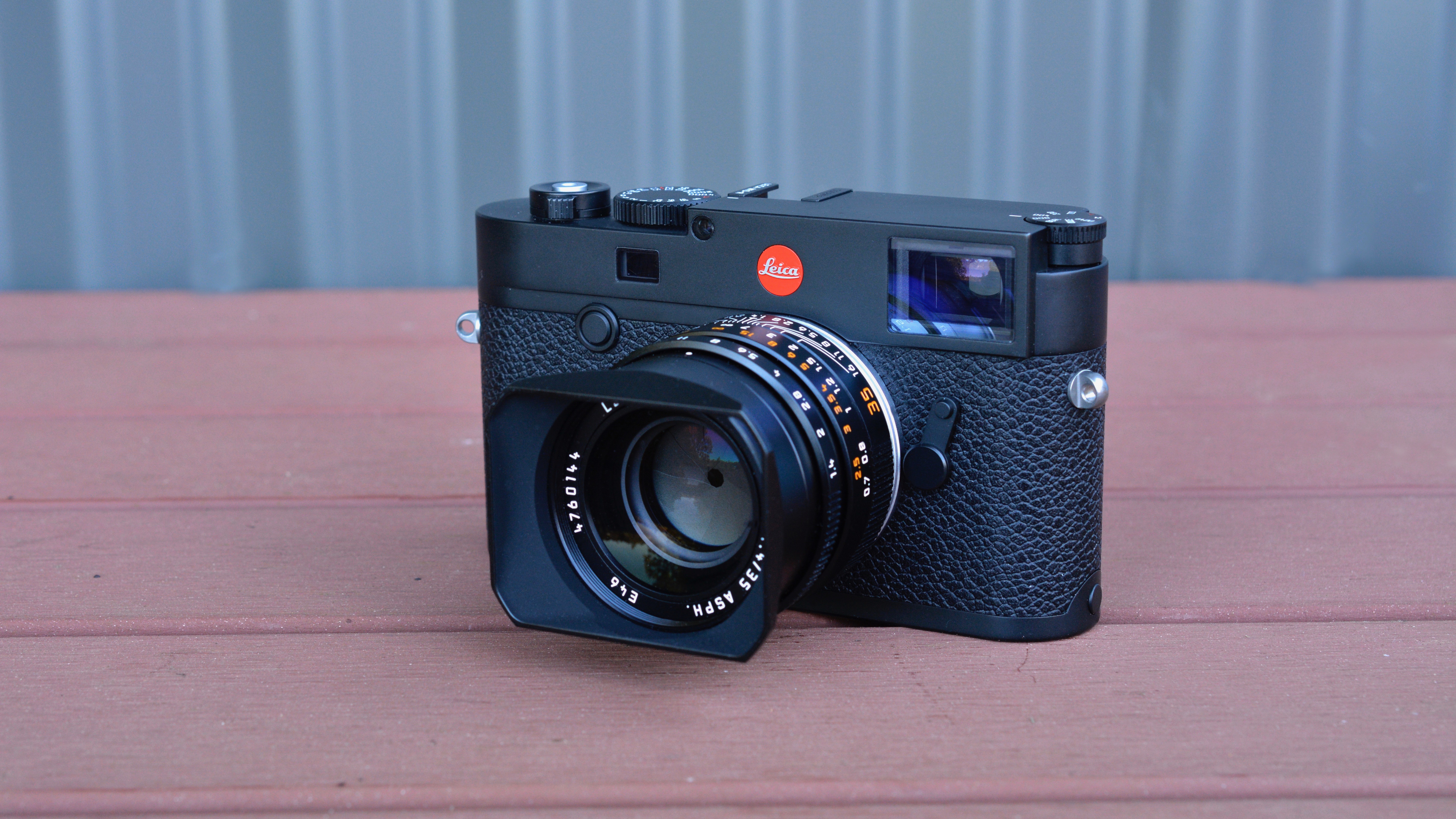
Exposure control hasn’t changed all that much since the 35mm M7 (introduced in 2002 and scandalised the purists by having an electronically-controlled shutter and, gasp!, an aperture-priority semi-auto exposure mode). Now, as then, the metering is via a centre-weighted average measurement that drives either the aperture-priority auto mode or fully manual control.
The shutter is the quieter – but not totally silent – unit that was introduced with the M10-P and is, for the record, very different from the M7’s, having vertical-travel metal blades (versus the traditional horizontal-travel cloth curtains) and a top speed of 1/4000 second. Flash sync is up to 1/180 second with external units coupling via a hotshoe only. The longest timed shutter speed has been increased to 16 minutes which is also the limit of the ‘bulb’ (‘B’) timer. There isn’t a sensor-based (electronic) shutter option.
Also of a more recent vintage, of course, is the auto exposure bracketing which can be set to sequences of either three or five frames with an adjustment of up to +/-3.0 EV. Combined with the exposure compensation – which runs up to +/-3.0 EV – you can bracket to either +6.0 EV or -6.0 EV.
The white balance control options comprise auto correction supplemented by eight presets (including one for HMI lighting), one custom measurement (which Leica calls “Greycard”) and manual color temperature control over a range of 2000 to 13,100 Kelvin.
In live view, the M10-R delivers a few extra capabilities. Firstly, there’s now a choice of metering patterns – multi-zone, centre-weighted average and spot – as measurement is via the imaging sensor. Arguably more useful are the various display elements of the live view screen which now include a dual-axis level indicator. There’s also a real-time histogram, both highlight and shadow warnings (adjustable for the lower and upper thresholds), a grid guide (either 3x3 or 6x4) and manual focusing aids, namely a magnified view based on a moveable target and/or a focus peaking display. The former can be set to either 5.0x or 10x, and the latter is available in a choice of colors – red, blue, green or white.
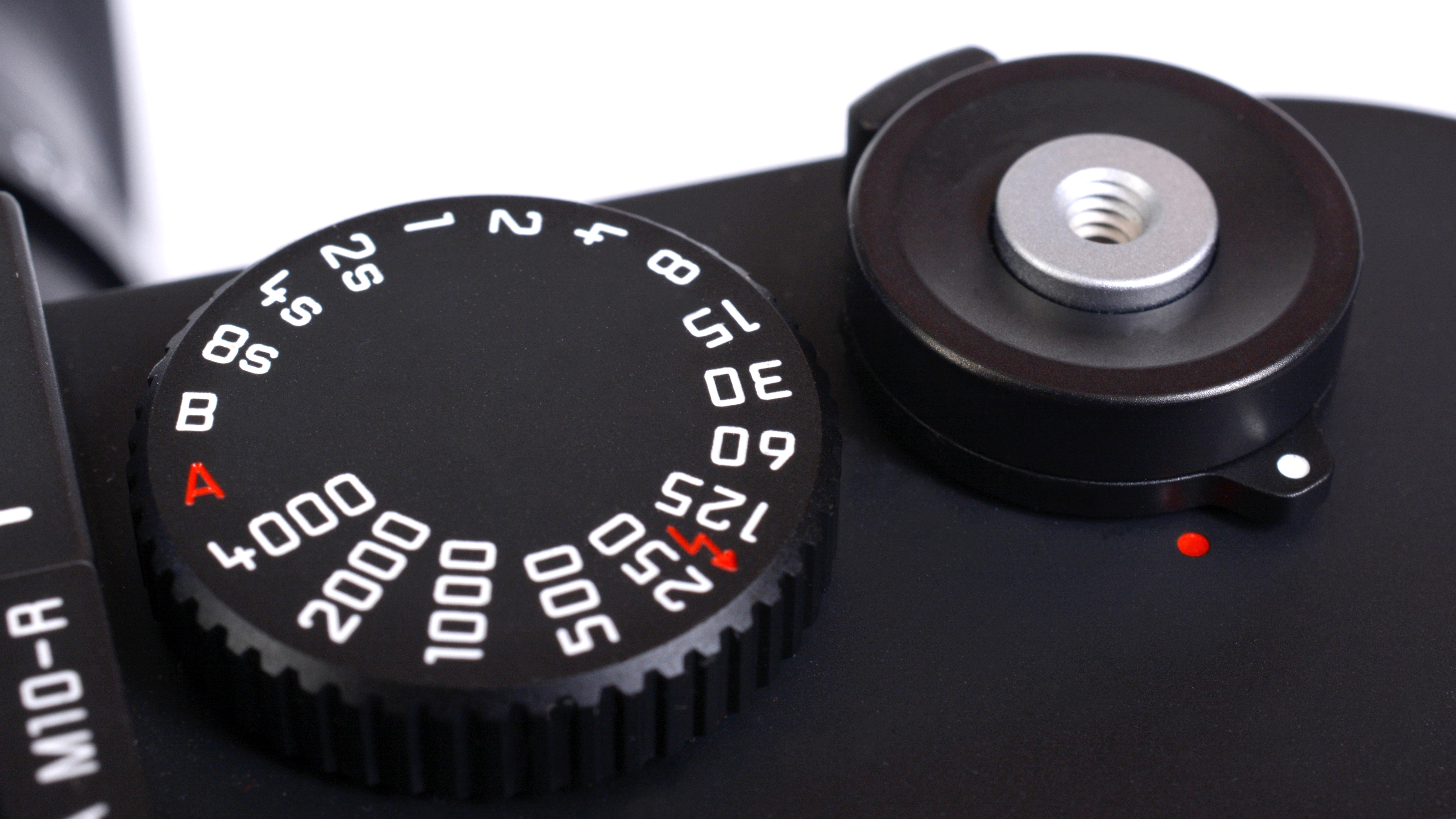
Design and handling
- Hand-built magnesium alloy and brass body
- Minimal external controls
- Fixed 1.037 million-dot screen with touch controls
The M10-R provides two distinct handling experiences. There’s the mechanical one – the optical finder, focusing and exposure control – and the digital one, which is everything you can do in live view.
For anybody encountering a digital Leica M for the first time, the thing you’re going to notice first is the sheer solidity of the construction. It feels ultra-tough because it is, but then there’s the traditional Leica finessing to make it feel like a fine instrument at the same time. Assembly is entirely by hand. The construction comprises a diecast magnesium alloy chassis with brass top and bottom plates which, no doubt, make a bit of a contribution to 660 grams body weight.
The styling is classic Leica 35mm rangefinder camera – more so since a slimmer body arrived with the first M10 – but with the obvious omission of a film advance lever and rewind crank. You get the iconic ‘red dot’ badge on this model, but you’ll struggle to find the model number… it’s engraved in very small type along one rail of the hotshoe.
Newbies may also struggle to find the compartments for the memory card and battery. They’re in the base, but behind the baseplate that detaches entirely to facilitate access – a design feature that’s directly carried on from the original M3 and every M camera since, film or digital. The reason was to maintain optimum structural integrity and this is still the case today and, even with this arrangement, the ultra-fine machining tolerances mean that the M10-R body is still protected against the intrusion of dust or moisture. Furthermore, the body isn’t compromised by any other compartments either, because there are no interfaces other than the flash hotshoe.
As with the rest of the M10 clan, this is exclusively a stills camera and, in reality, it’s all the more purer of purpose as a result… and, besides, this configuration really doesn’t lend itself to shooting video.
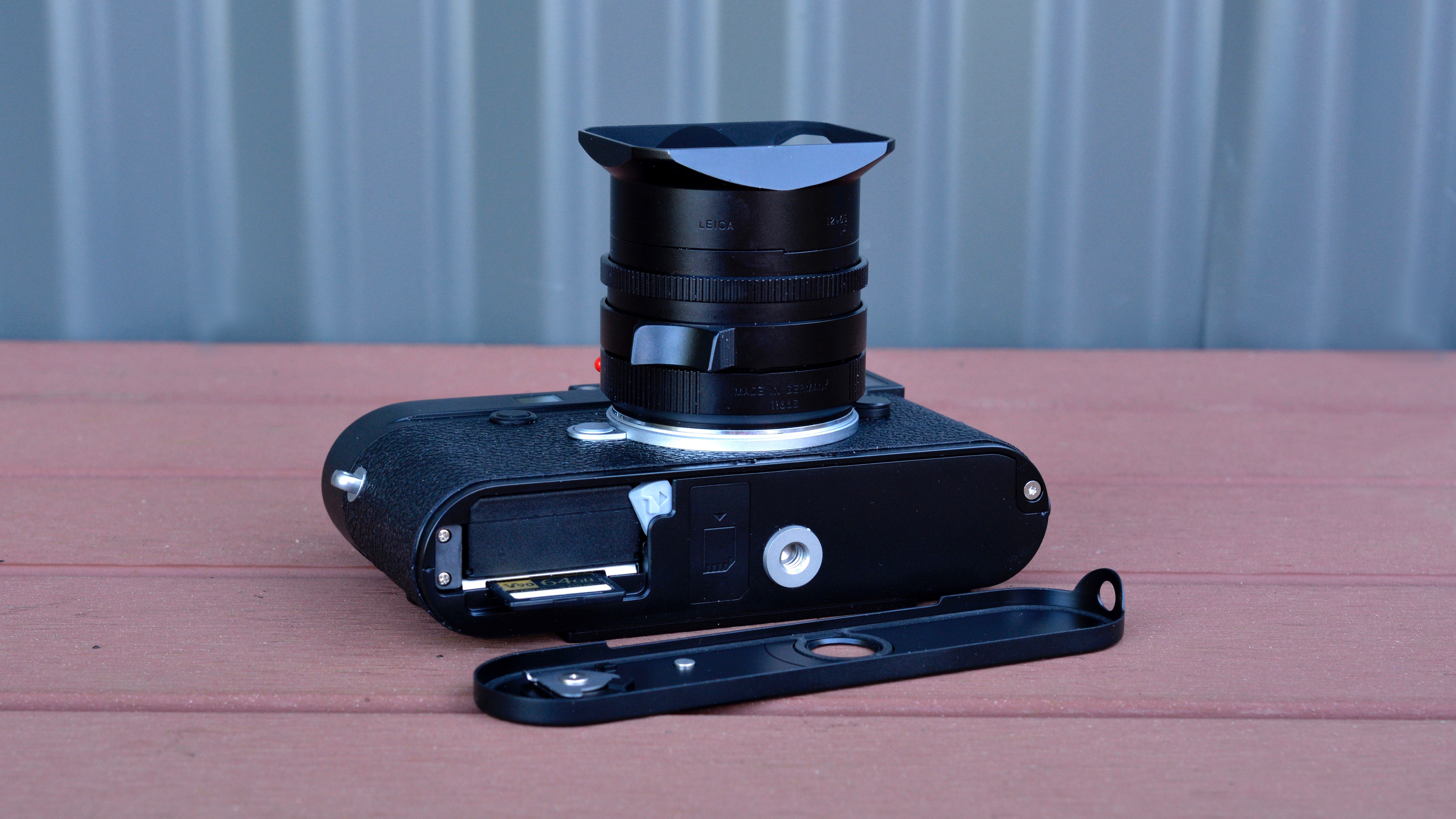
Perhaps not so surprisingly, there aren’t too many external controls to worry about. The top deck is dominated by a large shutter speed dial while a smaller dial – no doubt deliberately sited where the film rewind crank used to be – sets the ISO value. It’s marked from 100 to 6400 with an ‘A’ position for accessing the preset auto range and an ‘M’ position which can be assigned any setting you like from across the full sensitivity range, including the extensions and the one-third stop incremental values. Auto ISO control can be preset to either a maximum ISO setting or a maximum exposure time.
On the rear panel is a trio of main function buttons, a four-way navigator keypad – with a central ‘Enter’ button – and rear input wheel. No customisation complications to worry about here. The nav-pad simply navigates you through the menus and sub-menus so you won’t suddenly find they’ve taken you somewhere you didn’t want to go.
Control customisation is limited to the input wheel, which defaults to setting the exposure compensation, but can be set to cycle through the image magnification settings in live view. Also customisable is the Favourites menu that can be configured with as many regularly used items as you need (up to eight per page).
The M10-R is set up so this appears as the first menu when you hit the ‘Menu’ key… which actually makes sense when you think about it. The main menu covers everything in three-and-a-bit pages, including camera set-up, and here you can create up to four User Profiles to store a preferred camera set-up. In practice, you’d probably use these to configure the camera for shooting specific subjects or situations.
The 3-inch fixed rear is protected by a toughened Corning Gorilla glass faceplate and is adjustable for brightness over five levels. However, you can also set it to ‘Exposure Simulation’, which some users will undoubtedly find more useful given the viewfinder is optical.
The touchscreen implementation is a bit limited by today’s standards, but still handy to have. When shooting, it allows you to position the point on which you want to focus by simply tapping on the screen which will then also position the magnification aid if you’re using it. What’s really useful though, is that the main info display – which is available when using the optical viewfinder – has touch tiles so you can directly access a bunch of capture-related settings, including exposure compensation, white balance setting, drive mode and file format.
For review/replay there’s touch browsing, zooming or switching to the thumbnail pages, progressively to 12 and then 20. The replay screen itself includes a brightness histogram, highlight/shadow warning and the basic capture settings.
Interestingly, while the M10-R may not have any physical interfaces, it still has wireless connectivity and, via the Leica FOTOS app, you can transfer images, access the live view feed on your mobile device and the remote adjustment of some settings (but obviously not focusing or apertures).
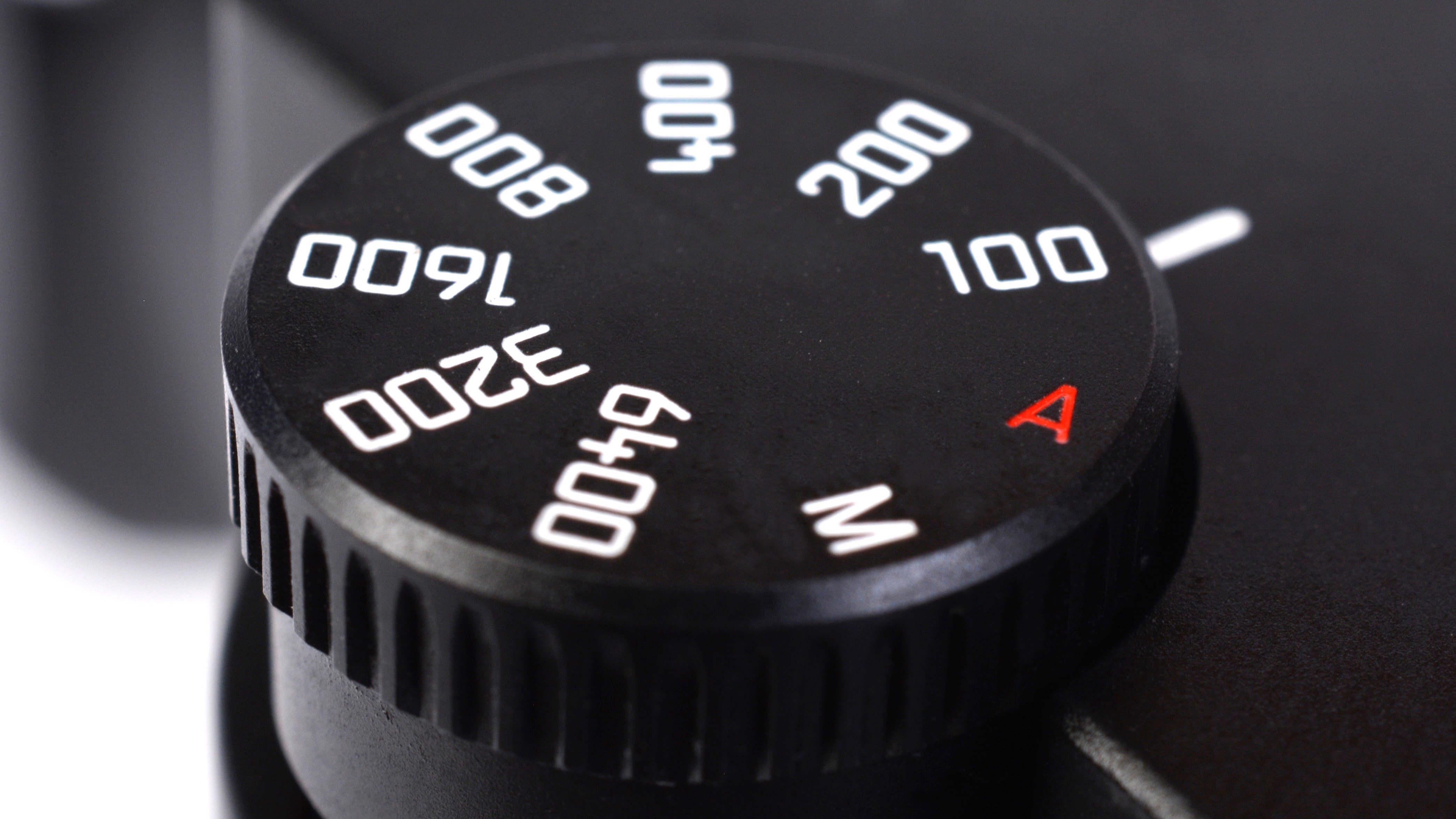
Performance
- RAW capture in Adobe DNG with 14-bit RGB color
- ISO 100 to 6400 sensitivity range, expandable to ISO 50,000
- Dynamic range of 15 stops
At this point in a camera test we’d be evaluating the autofocusing performance, which obviously doesn’t apply here, but it is worth repeating that the M10-R’s rangefinder focusing does allow for very precise manual focusing or, alternatively, there’s the digital-era focusing aids in live view.
Centre-weighted average metering needs to be managed too, as it will be easily influenced by overly bright or overly dark scenes, so you’ll need to know when to apply exposure compensation or to make adjustments when shooting in the fully manual mode. Again, though, there’s the real-time histogram display in live view to provide a guide (and the option of multi-zone metering).
The M10-R’s sensor – which, as is the case with the SL2, is designed by Leica, but fabricated by somebody else – delivers a maximum image size of 7864x5200 pixels with 14-bit RAW capture in the Adobe DNG format (using lossless compression). The largest JPEG is just a few pixels less in image size – at 7840x5184 – but there is also the choice of two smaller file sizes.
The native sensitivity range is equivalent to ISO 100 to 6400 with extensions up to ISO 50,000. Leica is claiming a two-stop increase in the dynamic range over the 24MP models ,which would put it at just over 15 stops. The buffer memory stays at 2GB and the continuous shooting speed is 4.5fps (versus 5.0fps) despite the big increase in resolution, so the burst length is reduced. But it’s hard to see this being a major issue with a camera like the M10-R. It’s about more considered shooting rather than blazing away indiscriminately and hoping for one good shot out of a sequence.
With a Panasonic 64GB SDXC UHS-II V90 speed memory card loaded, our test-example M10-R captured a burst of 12 JPEG/large frames in 2.671 seconds, which represents a continuous shooting speed of 4.49fps. These test files were around 18.8MB in size on average. The M10-R matches its quoted specs here, but it’s quite likely many users won’t ever take the drive mode setting off ‘single’.
Image quality
With 40MP of resolution tap, the M10-R delivers plenty of tightly-resolved fine detailing and seamlessly smooth tonal gradation. The classic Leica ‘punchiness’ is still there and really adds depth to an image. The new sensor’s wide dynamic range ensures plenty of exposure latitude when shooting in RAW so, if the centre-weighted metering does trip you up, it’s easily correctible post-camera.
When shooting JPEGs, lots of detailing is maintained in the brighter highlights provided you’re on top of the exposure control, but dialling in a little minus compensation is good insurance as the shadows will easily brighten with no appreciable increase in noise.
With no color modes to play with, what you see is what you get, but it’s good in terms of balancing accuracy and saturation. The subtler shades are particularly well-managed and, overall, there’s almost a filmic look to the color reproduction, which is very pleasing to the eye.
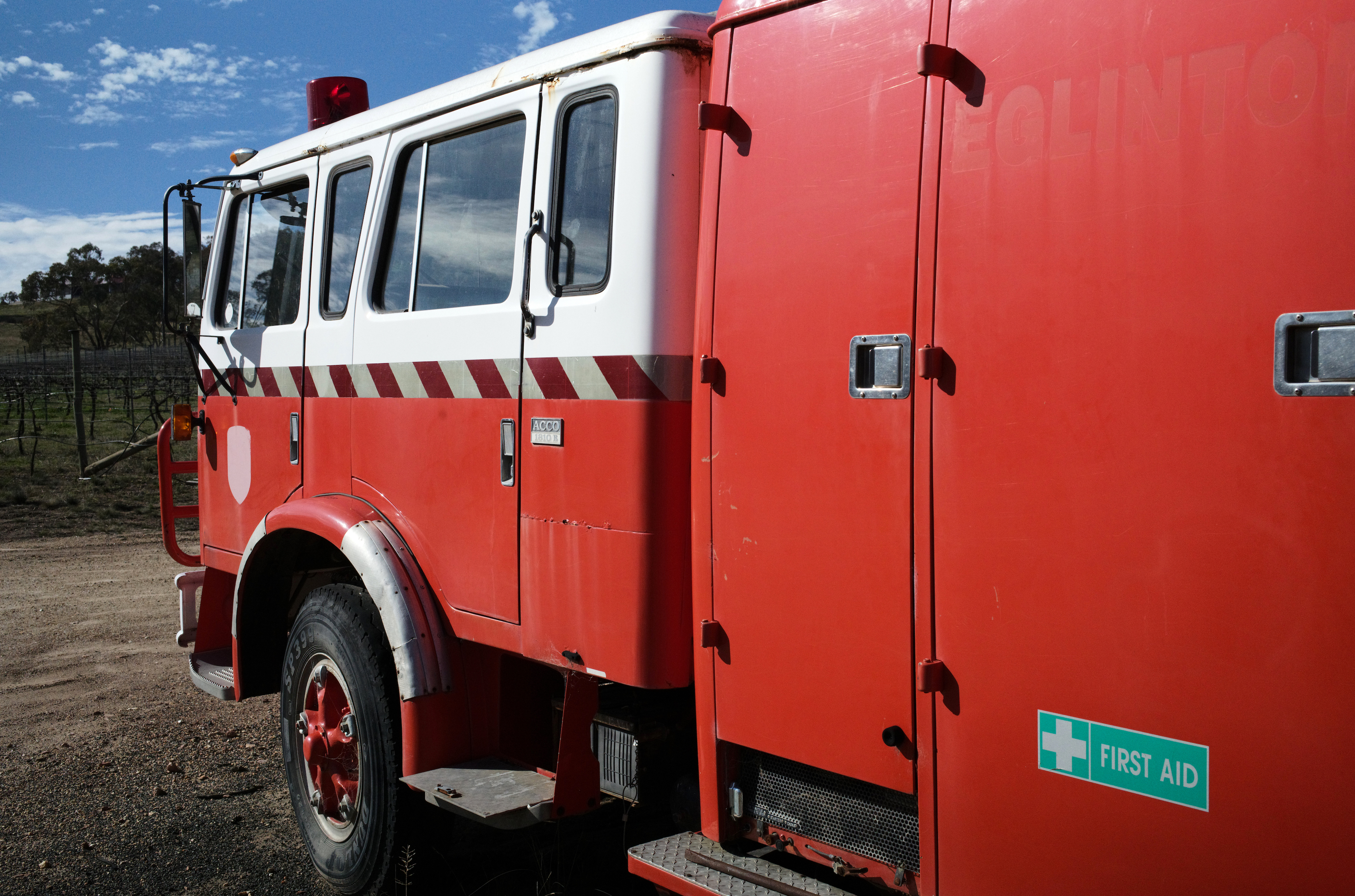
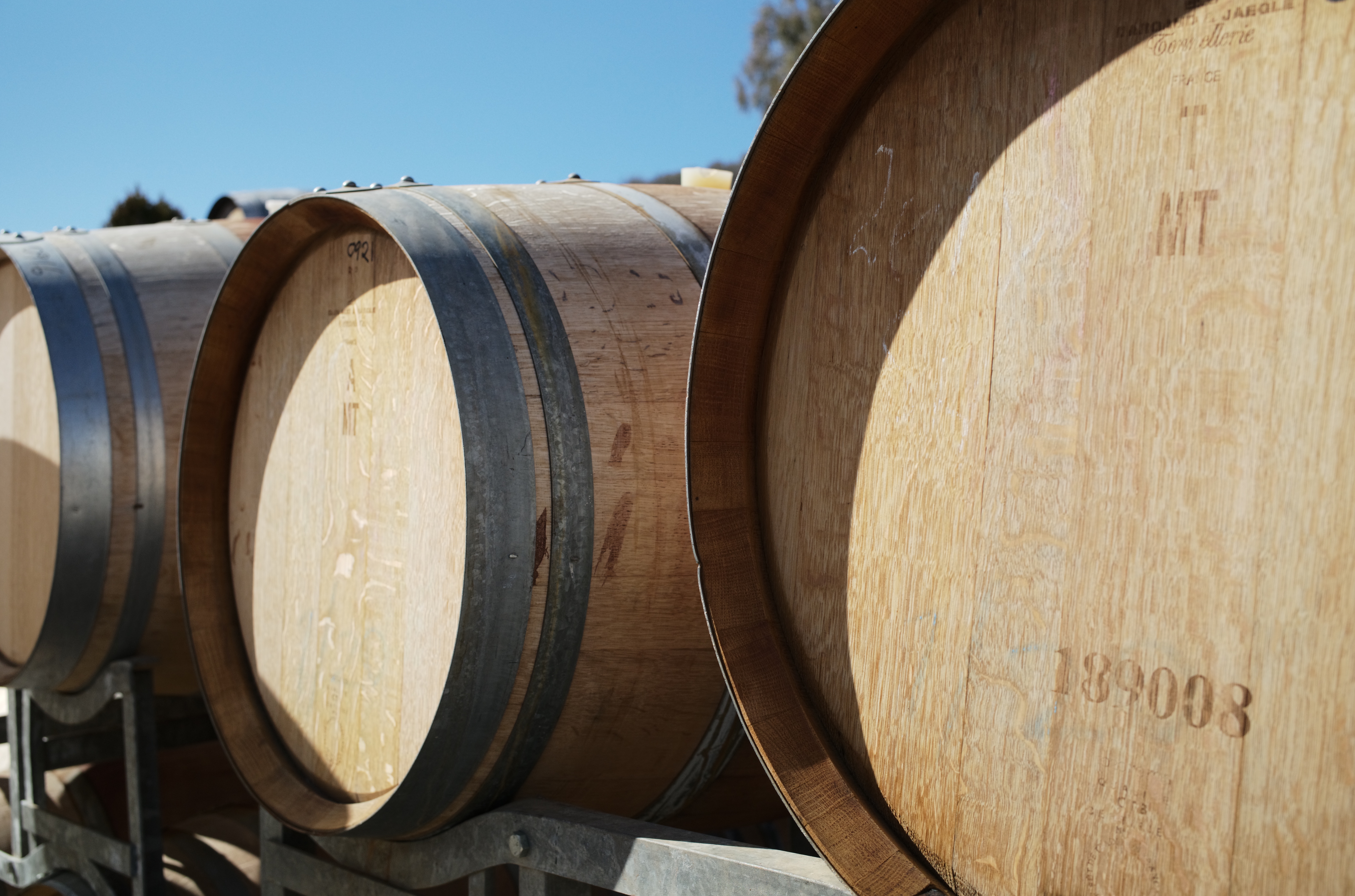
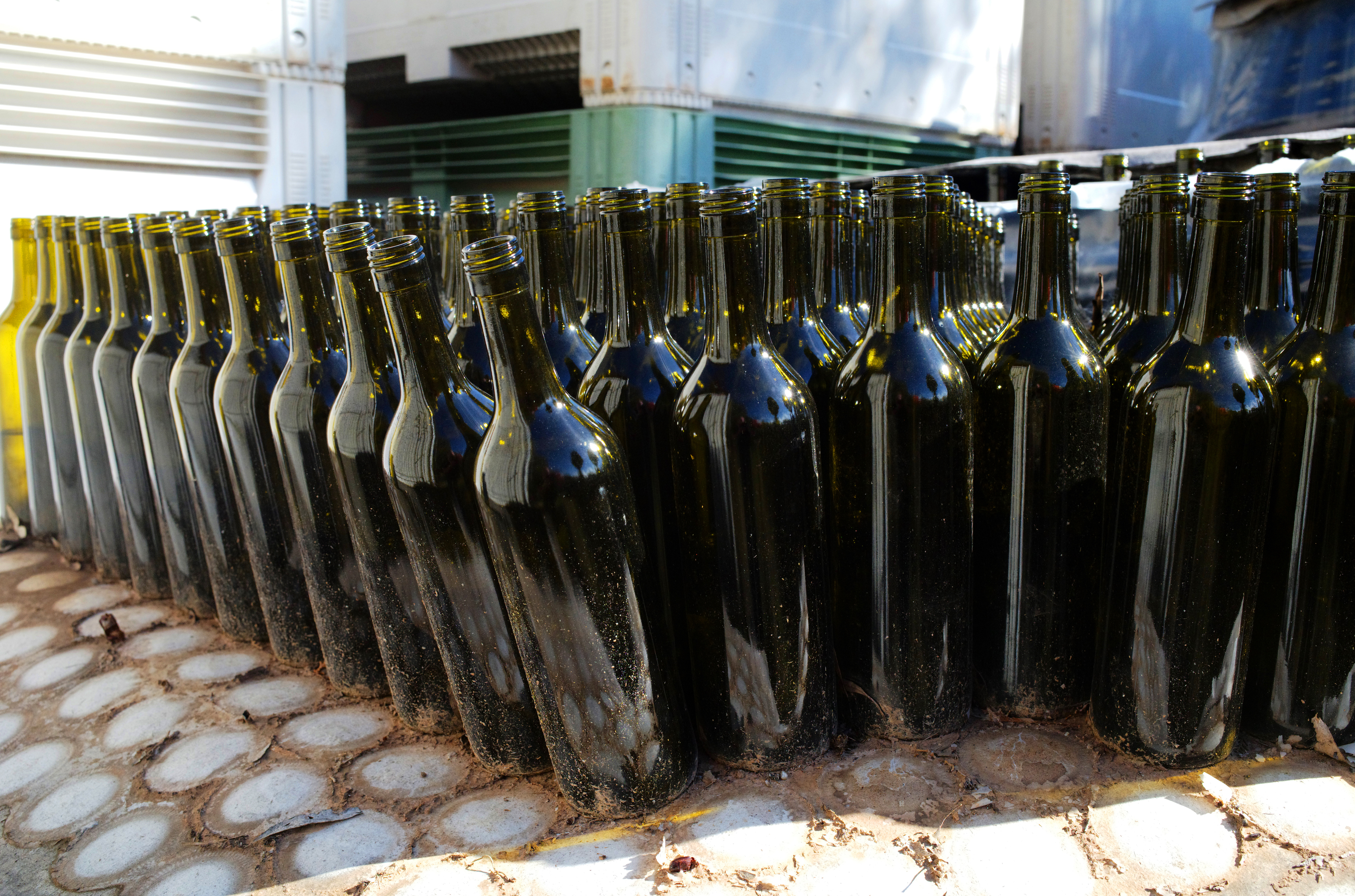
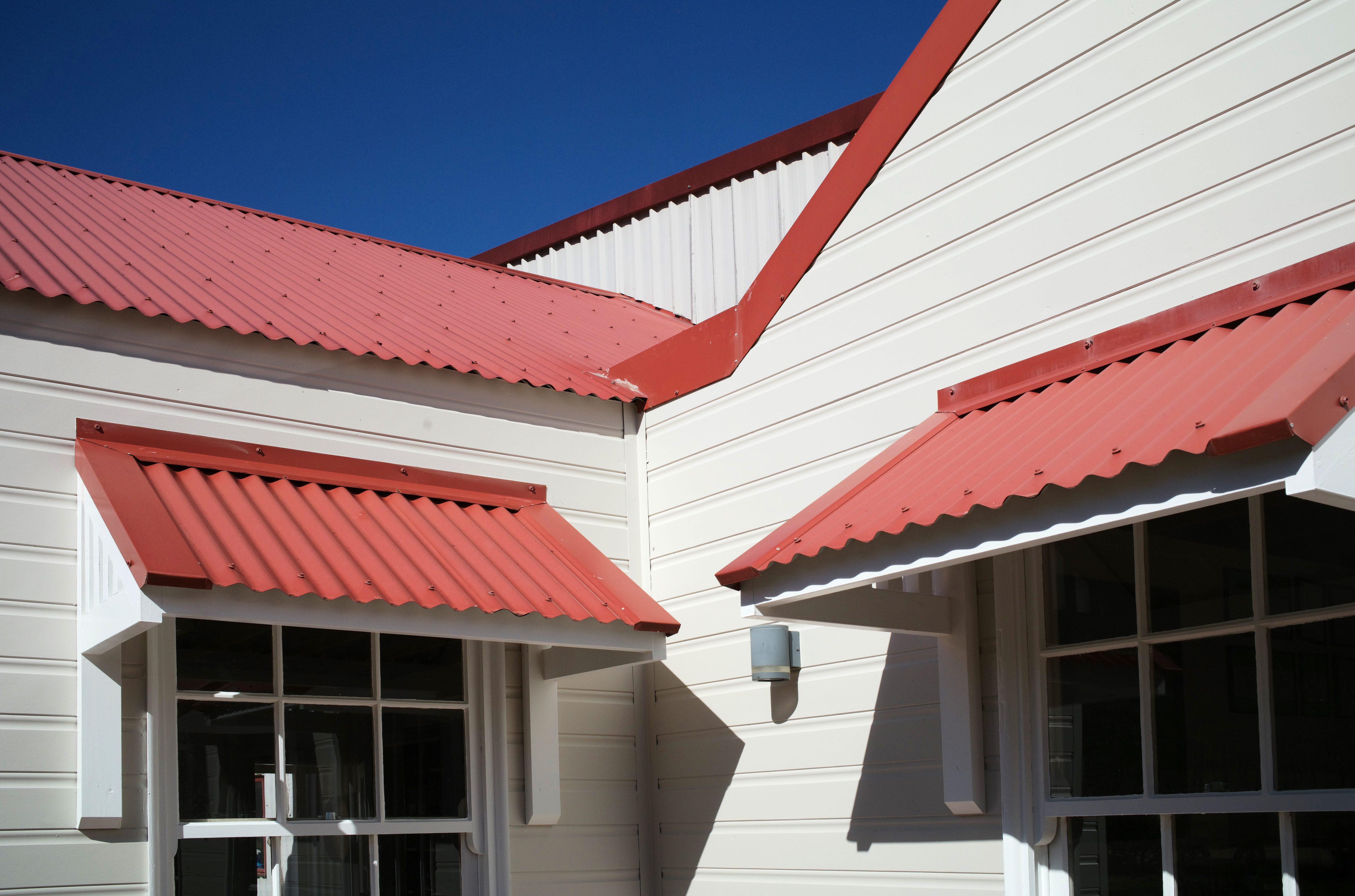

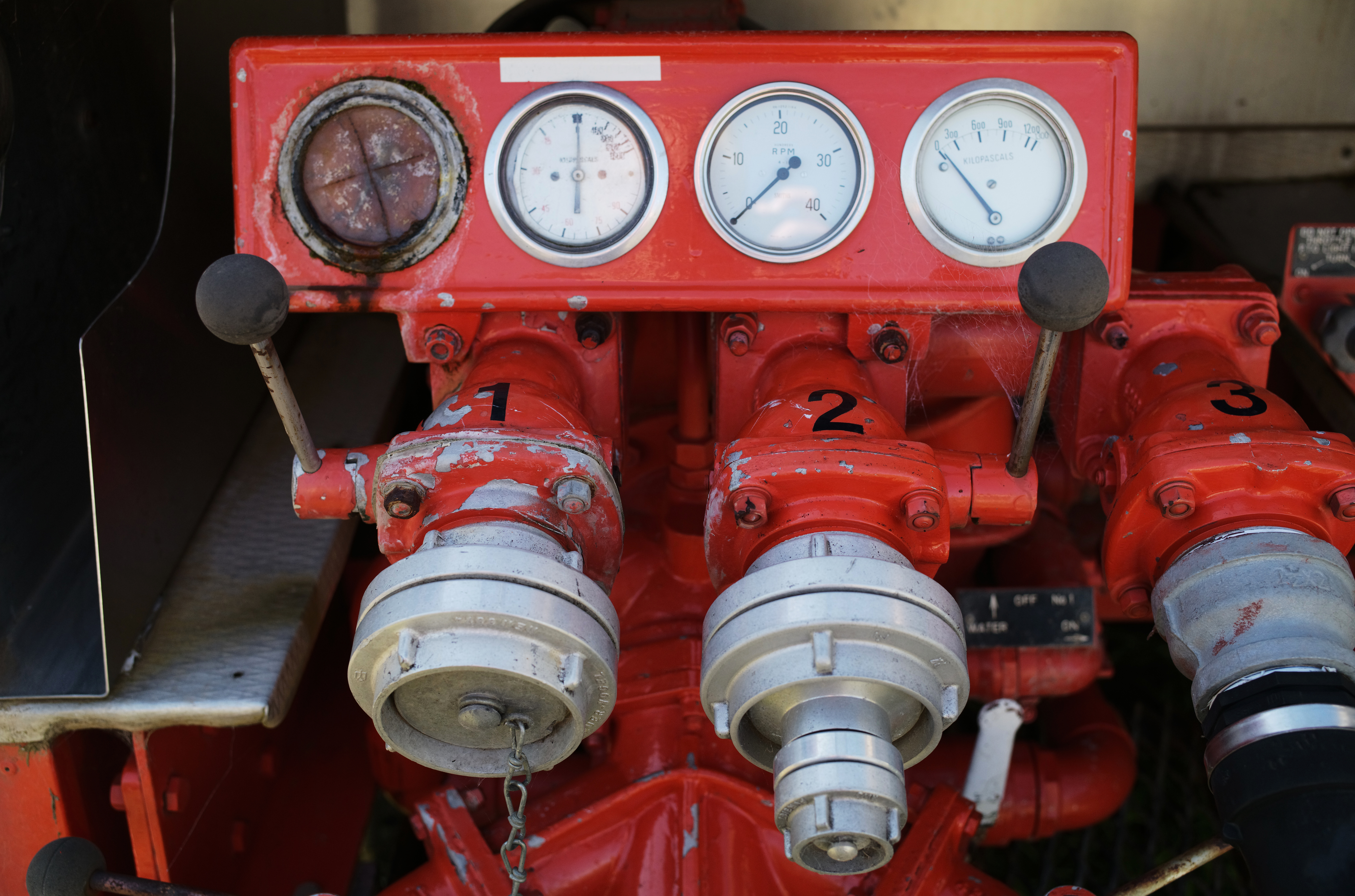

You’d expect the high ISO performance to not match that of the 24MP cameras, but this doesn’t appear to be the case… in fact, the M10-R does better. Once again, you can use the entire native sensitivity range without any significant drop in either definition or saturation at the higher settings. The extension settings exhibit some deterioration as the noise reduction processing becomes more aggressive, but ISO 12,500 and even 25,000 are still quite acceptable with only slight graininess caused by chroma noise.
Leica’s M lenses – also painstakingly hand-built, including the polishing of aspherical element surfaces – are a big part of the story here. The Holy Trinity of Summilux-M (f/1.4), Summicron-M (f/2.0) and Summarit-M (f/2.4) set the standard for fast primes in resolution, contrast and three-dimensional tonality. Furthermore, Leica specifically tunes its sensors to the optical characteristics of its M lenses, including the physical construction which, in this case, has an ultra-thin (0.9mm), single-layer cover glass to filter UV and IR light, and employs a dedicated microlens design. Uniformity of centre-to-corner brightness and sharpness are the key considerations.
Should I buy the Leica M10-R?

Buy it if...
You’re a camera design purist
Forget the so-called retro digital camera designs, the M10-R is the real thing with a basic configuration that goes all the way back to 1954 and the original M3.
Your style of photography is slower and more considered
Leica designed its first 35mm camera with street photography primarily in mind, and this is still what the digital rangefinder models do best, thanks to the optical viewfinder, quiet handling and low-key styling.
You appreciate the intrinsic value of a hand-build, precision instrument
Buying a Leica camera is about more than just buying a camera – although they are, of course, very fine cameras. You’re paying for the heritage, prestige and exclusivity.
Don't buy if...
You like to make the most of the latest camera technologies
Everything the M10-R does up to the point of image capture hasn’t changed much over a few decades. So, if you like to use advanced automation to improve your strike rate, it simply doesn’t have any.
You’re into sports, action or wildlife photography
The rangefinder camera configuration has its limitations, including the range of lenses that can be practicably used… so no zooms and no longer telephotos beyond 135mm.
You want to make your gear budget stretch as far as it can go
Even Leica knows its cameras are pricey and, with the M models, it’s targeting a quite specific audience who is prepared to pay what’s asked, but for many photographers there are much better value propositions among all the Japanese brands.
First reviewed August 2020
Paul has been writing about cameras, photography and photographers for close to 40 years. He joined Australian Camera as an editorial assistant in 1982, subsequently becoming the magazine’s technical editor, and has been editor since 1998. He is also the editor of sister publication ProPhoto, a position he has held since 1989. In 2011, Paul was made an Honorary Fellow of the Institute Of Australian Photography (AIPP) in recognition of his long-term contribution to the Australian photo industry. Outside of his magazine work, he is the editor of the Contemporary Photographers: Australia series of monographs which document the lives of Australia’s most important photographers.
